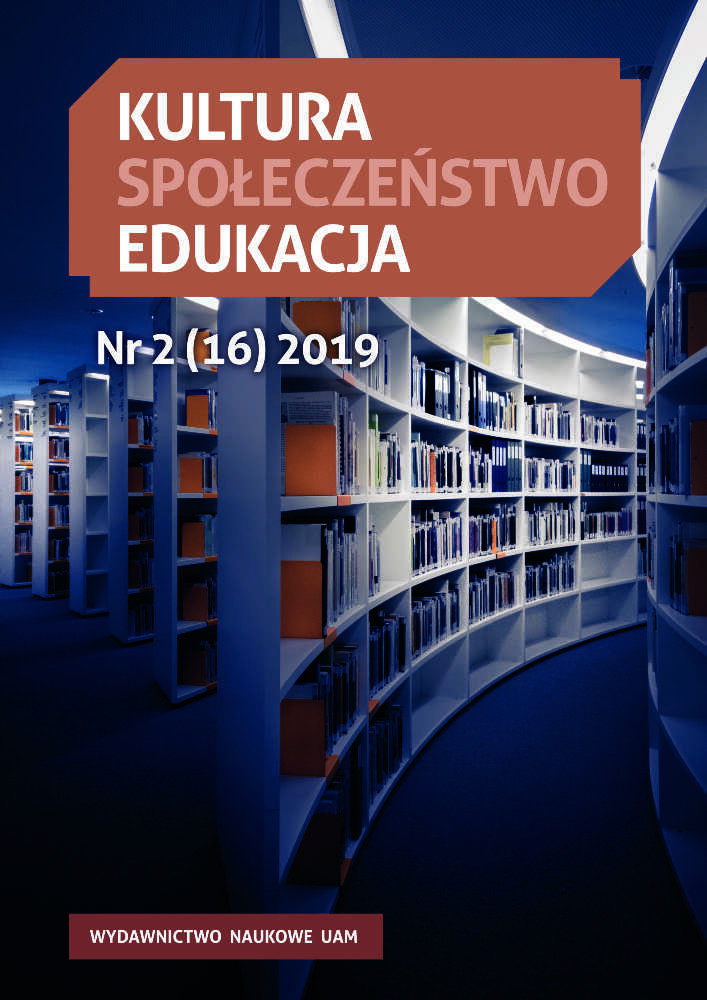Abstrakt
Wysocki Adam, Mysticism in Tibetan Buddhism. A study into the Path of Insight. Culture – Society – Education no 2(16) 2019, Poznań 2019, pp. 183–201, Adam Mickiewicz University Press. ISSN 2300-0422. DOI 10.14746/kse.2019.16.12.
The Path of Insight is a spiritual path of Tibetan Buddhism tradition. The fundamental part consists of three elements, such like: preliminary practices, the tranquility meditation and the penetrating insight meditation. However, counted three parts one ought to perceive as aspects of one process aiming to realize of the soteriology purpose. The achievement of the non-dual state has its own development process, which consists experience of the non-dual state, stabilise it and then development of it. Outline of development process is contained in the Path o Insight and relies on exceeding of subjective-objective divisibility. It is
perceived as an effect of the ignorance of true nature of the individual. The achievement of the non-dual state, that is nature of the mind (tib. sems nyid) constitutes the purpose of the Path of Insight and it is described by concept-symbol called mahamudra.
Bibliografia
Beru Khyentse Rinpoche (1993), Komentarz do tekstu IX Karmapy, [in:] IX Karmapa Wangcziuk Dordże, Mahamudra eliminująca ciemności niewiedzy. Kraków (Year of the Water Rooster).
Brück M. von (1997a), Buddyzm, [in:] H. Waldenfels (ed.), Leksykon religii, Warszawa.
Brück M. von (1997b), Tantra/Tantryzm, [in:] H. Waldenfels (ed.), Leksykon religii, Warszawa.
Chang G.C.C. (1987), Centralna nauka tantry tybetańskiej, [in:] J. Sieradzan (ed.). Buddyzm, Kraków.
Dakpo Tashi Namgyal (2006), Mahāmudrā: The Moonlight. Quintessence of Mind and Meditation, Boston.
Eliade M. (1997), Joga. Nieśmiertelność i wolność, Warszawa.
Jakubczak K. (2003), Doświadczenie mistyczne w tradycji buddyjskiej, [in:] M. Jakubczak, M. Sacha-Piekło (eds.), Między wiarą a gnozą. Doświadczenie mistyczne w tradycjach Orientu, Kraków.
IX Karmapa Wangcziuk Dordże (1993), Mahamudra eliminująca ciemności niewiedzy, Kraków (Year of the Water Rooster).
Keown D. (1997), Buddyzm, Warszawa.
Khenchen Thrangu Rinpoche (2003), The Ninth Karmapa’s Ocean of Definitive Meaning, Ithaca.
Kosior K. (1996), Mistycyzm, [in:] J Dębowski, L. Gawor, S. Jedynak i in., Mała encyklopedia filozofii, Bydgoszcz.
Lama Tashi Namgyal. (2003), Introduction, [in:] Khenchen Thrangu Rinpoche, The Ninth Karmapa’s Ocean of Definitive Meaning, Ithaca Lozang Cziekyi Gyaltsen, I Panczen Lama (1995), Wielka Pieczęć Pustki, (Mahamudra Pustki), Kraków (Year of the Wood Pig).
Ngawang Dhargyey (1995). Komentarz do tekstu I Panczen Lamy, [In:] Lozang Cziekyi Gyaltsen, I Panczen Lama, Wielka Pieczęć Pustki, (Mahamudra Pustki). Kraków (Year of the Wood Pig).
Nydahl O. Lama (1999), Wielka pieczęć. Pogląd mahamudry buddyzmu Diamentowej Drogi, Gdańsk.
Podsiad A., Więckowski Z. (1983), Mały słownik terminów i pojęć filozoficznych, Warszawa.
Ray R.A. (2002), Secret of the Vajra World. The Tantric Buddhism of Tibet, vol. 2. Boston–London.
Tenga Rinpoche (1994), Sutry i tantry. Drogi buddyzmu, Kraków.
Traleg Rinpoche (2005), Mahamudra ocean pewności, Kraków (Year of the Water Rooster).
Zotz V. (2007), Historia filozofii buddyjskiej, Kraków.
Licencja
Prawa autorskie (c) 2020 Adam Wysocki

Utwór dostępny jest na licencji Creative Commons Uznanie autorstwa – Bez utworów zależnych 4.0 Międzynarodowe.
